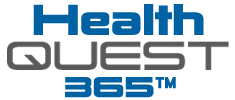As we age, our body undergoes various changes. Following the golden age of 50, biological transformations take place, affecting the muscles and bones of the human body. Muscle mass naturally starts to wane, plus the threat of osteoporosis rears its head.
But what if I told you that aging doesn't have to equal decline?
Biological Changes Occurring After 50
From around the age of 30, most people start to lose lean tissue. Muscles, liver, kidneys, and other organs might lose some of their cells.
This process of muscle loss is complemented by a decrease in tone and an increase in fatty infiltration, leading to a condition called sarcopenia.
The Risks of Osteoporosis and Muscle Deterioration
Osteoporosis is a critical health condition where bones become fragile and more likely to break. If not prevented or left untreated, osteoporosis can progress unnoticed until a bone breaks.
Prevention of Osteoporosis and Muscle Loss After 50
As the saying goes, 'Prevention is better than cure,' the same applies to osteoporosis and muscle loss. But how?
Importance of Nutrition
Nutrition plays a crucial role in preventing muscle loss and osteoporosis. The foods we eat contain nutrients vital for muscle and bone health.
Key Vitamins & Minerals
Certain vitamins and minerals including calcium, vitamin D, and protein are pivotal to bone health and muscle maintenance.
Best Foods for Bone and Muscle Health
Incorporating foods rich in calcium, vitamin D, and protein like dairy products, lean meat, beans, and vegetables like kale and broccoli into your daily diet can promote muscle and bone health.
The Role of Exercise
Regular physical exercise can help to slow the loss of bone density and muscle mass.
Best Exercises for Musculoskeletal Health
Strength training exercises using weights, resistance bands, or yoga poses are effective. It’s crucial to diversify your activities to challenge different muscle groups and stimulate various parts of the skeletal system.
Regular Workout Plans
A minimum of 30 minutes a day of moderate-intensity activity for 5 days a week is recommended to aid in bone and muscle health.
Regular Health Check-Ups
Frequent medical check-ups can help detect any potential problems or conditions early, thus enabling early treatment and effective prevention strategies.
Conclusion
Osteoporosis and muscle loss after 50 are very real threats to our health as we age. However, with strategic nutrition plans, physical exercise, and regular health checks, it's possible to mitigate their impact significantly.
Do you want to take charge of your health today? Health Quest 365's Organic Greens 365 and Organic Reds 365 are here for you. You will not regret trying them!
FAQs
1. What is the best way to check for osteoporosis?
A Bone Mineral Density (BMD) test is the best way to check for osteoporosis.
2. Can osteoporosis be cured?
Although osteoporosis can't be completely cured, it can be controlled with proper treatment.
3. How does a workout aid in reducing the risk of osteoporosis?
Workouts, particularly weight-bearing exercises, stimulate bone-forming cells and enhance bone density.
4. Which foods are rich in Calcium and Vitamin D?
Foods like dairy products, spinach, and salmon are rich in Calcium and Vitamin D.
5. Does menopause contribute to muscle loss and osteoporosis?
Yes, lower estrogen levels during menopause can lead to bone loss and thus, increase the risk of osteoporosis. Menopause can also contribute to muscle mass reduction.
